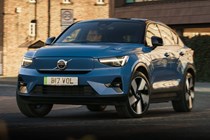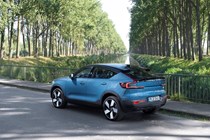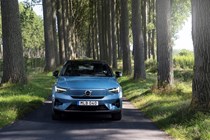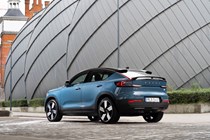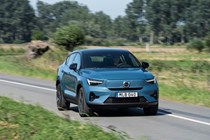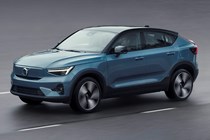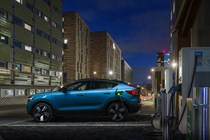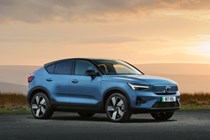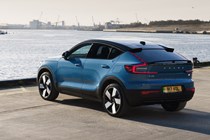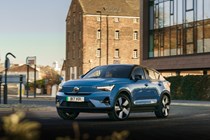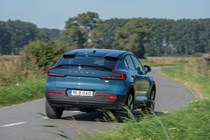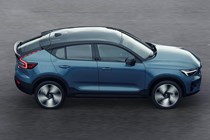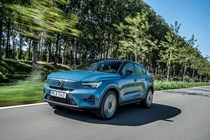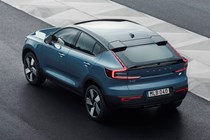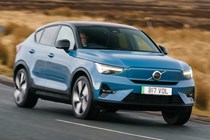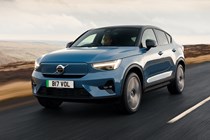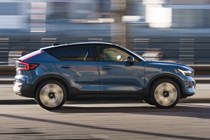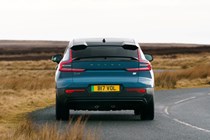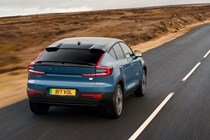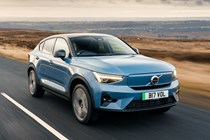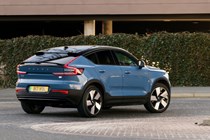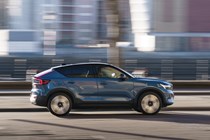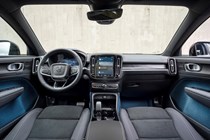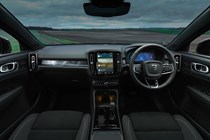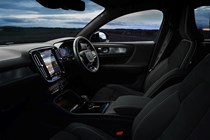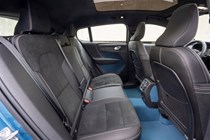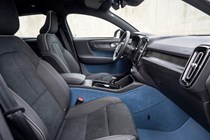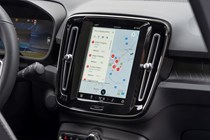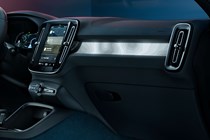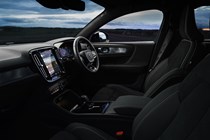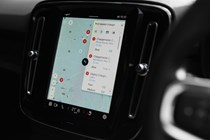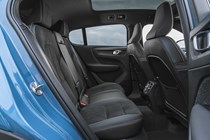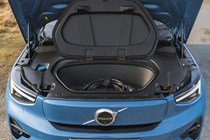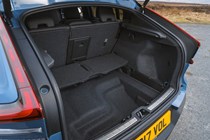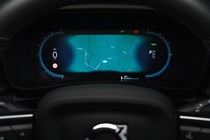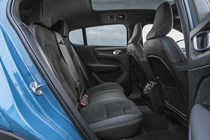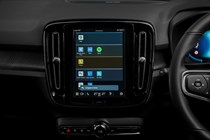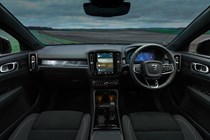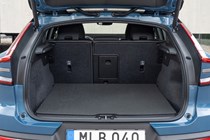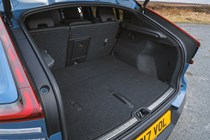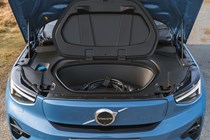
Volvo C40 engines, drive and performance
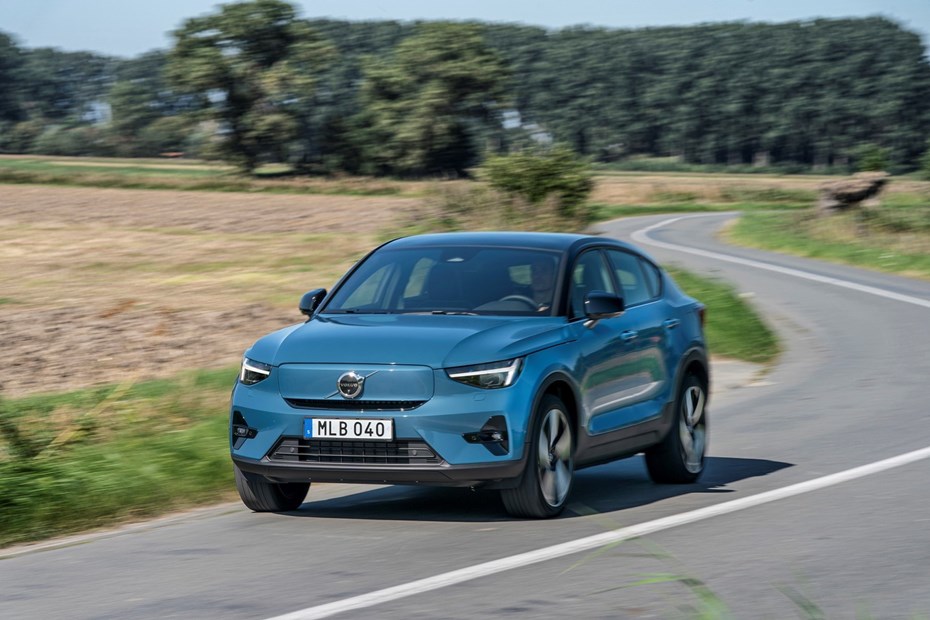
- 238 or 408hp
- Two-wheel drive or four-wheel drive
- Easy, secure and safe to drive
Electric engines
There are two motor setups to choose from. The first is the single-motor. At launch, this was a front-wheel drive car, but as of 2023 Volvo’s moved the motor onto the rear axle giving it rear-wheel drive in a bid to boost efficiency.
Now the rear-wheel drive C40 has 238hp and a 0-62mph time of 7.3 seconds. That’s plenty quick enough for most people’s needs, we think – it feels sprightly off the line, with the rear-wheel drive meaning you don’t get the characteristic front-wheel scrabble of powerful front-driven rivals. It’ll return up to 297 miles of range.
The twin-motor C40 offers significantly performance and a useful boost in range, widening the gap between it and the single-motor variant. It has 408hp, made up of a 150hp motor at the front and a 258hp motor at the rear. Before the 2023 update, the twin-motor used a pair of 204hp motors.
The front motor can now be disconnected, which improves efficiency further as it only cuts in when it’s needed. Volvo claims up to 342 miles of WLTP range, a significant improvement on the pre-update’s 278 mile maximum range. And with a 0-62mph sprint of 4.7 seconds, it’s almost comically fast – though not as quick as a Tesla.
Like with most electric cars, both C40’s urgency is most felt at 0-30mph. But overtakes in the 60-70mph region will still be dispatched quickly, especially in the twin motor.
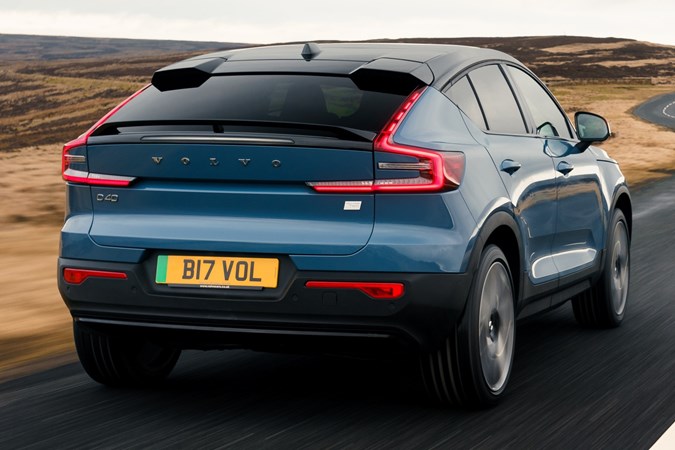
What’s it like to drive?
- Light steering
- A bit bumpy at low speeds
- Hushed
Simplicity is the name of the game here. The Volvo C40 doesn’t even have a starter button or a parking brake – you simply get in, press the brake, shift into D and get going.
That simplifying factor carries over into the driving experience, where you won’t find anything so complex as switchable drive modes. Instead there’s only two controls – one to firm the steering up, and one to switch to ‘One-Pedal Drive’, which ramps up the regenerative braking so you can coast to a full stop without touching the brake pedal.
This works well in town, but we wish there was a setting between drive and one pedal. The former seems to let the car freewheel forever, while the latter slows suddenly if you get off the power on the motorway. If only Volvo kept its ‘B’ mode on the gear selector to ramp up regen to engine braking levels.
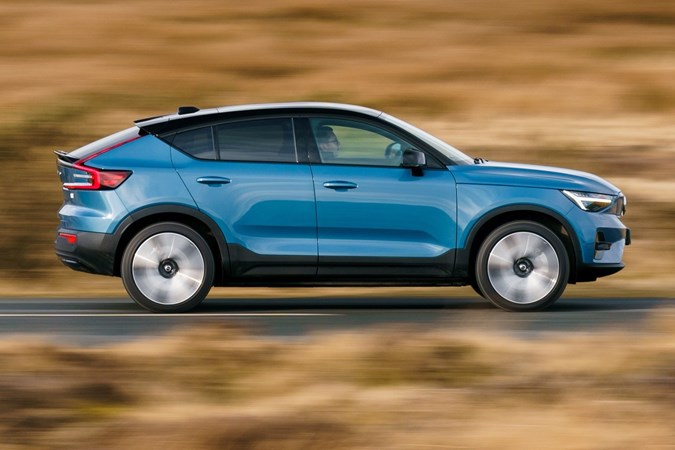
Ride comfort certainly isn’t bad, especially if you opt for the smaller wheels, but neither is it a great strength of the car. Around town it deals with potholes and pimples with a slightly rubbery, thuddy feel although things do improve on the motorway. Even so, a much cheaper Skoda Enyaq is far more cosseting.
Whether you go for the single or twin motor, the C40’s handling is safe and secure rather than sporty and exciting. The steering is well weighted and precise enough without giving you a great sense of connection to the road’s surface. There’s more body roll than in lower, leaner rivals and the stability control kicks in well before you get into any real trouble. In other words, it’s perfectly fine for family ferrying, but not something that’ll raise your heart rate.


